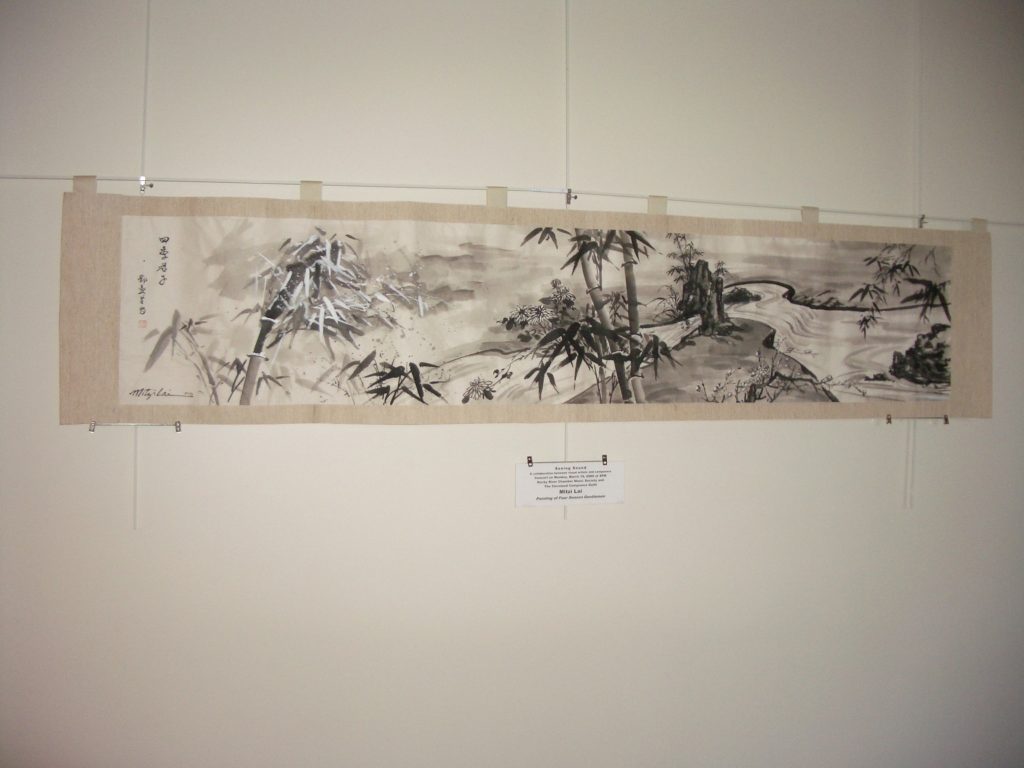Performances
World Premiere: Cleveland Chamber Collective, Rocky River Chamber Music Society, Rocky River, Ohio, March 16, 2009
Program Note
In the autumn of 2006 I enrolled in Mitzi Lai’s Chinese brush painting class at the Cleveland Museum of Art, and for several hours each Tuesday afternoon experienced the joy and serenity which comes in learning to paint bamboo in the traditional Chinese way. Soon thereafter, the Rocky River Chamber Music Society in conjunction with the Cleveland Composers Guild proposed a collaborative concert in which local artists and composers would team up to create new works. I asked Mitzi to make a painting for me to compose to, and a few weeks later, she presented me with a scroll entitled Four Seasons Gentlemen.
The ideal of the Chinese scholar practicing the art of brush painting as a form of self-improvement, contemplating the virtuous qualities inherent in the subjects he painted, is an ancient tradition in China. Often painted were the so-called “four gentlemen,” bamboo, plum blossom, orchid, and chrysanthemum, each of which represents one of the four seasons. In practicing the art of Chinese brush painting, the qualities embodied in these plants are as important as the depiction of their form, and the manner in which each plant is painted has become stylized, so that these two aspects have become nearly inseparable. For example, the bamboo stands tall, grows vigorously and yet yields to the power of the wind. The orchid represents purity and the ideal of the recluse.
I studied Mitzi’s painting carefully. Beginning at the right, the eye follows a river upstream; I began to see the painting as a journey backward in time. Rather than make the obvious choice of composing in a traditional Chinese style, I settled upon a more contemporary musical language as the primarily pitch material for the piece which to me implies the Taoist concept of yin and yang: a twelve tone collection of two symmetrical hexachords. In my imagination, musical gestures began to imitate the physical act of pressing and releasing the brush to control the flow of ink onto paper. The overall form and shifting moods of the piece reflect the linear and yet circular aspect of the viewing and the understanding of the meaning of a scroll painting.
